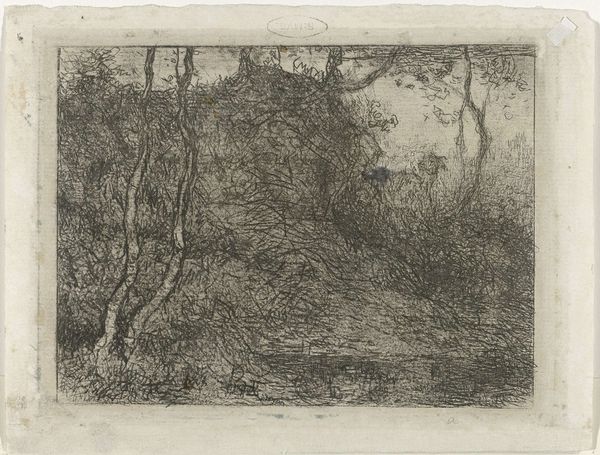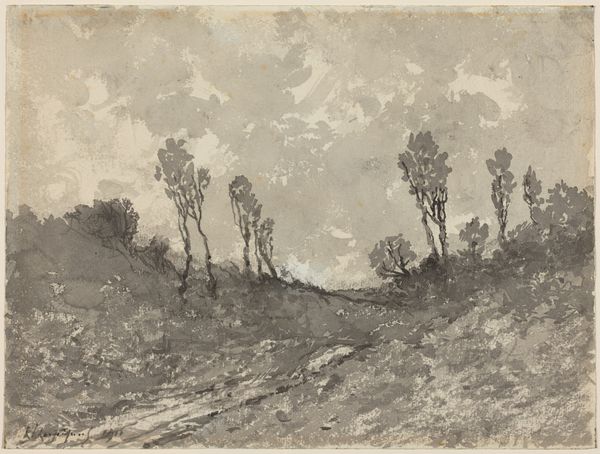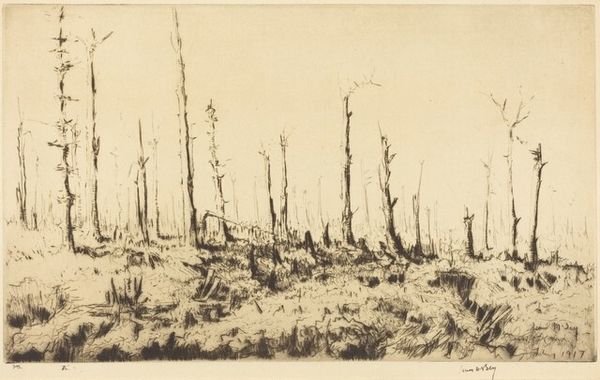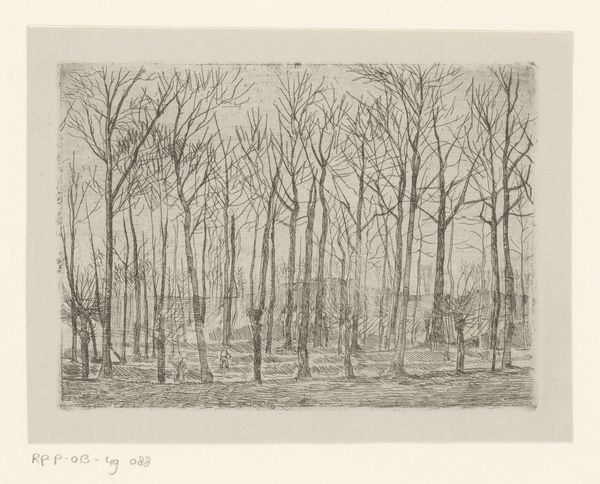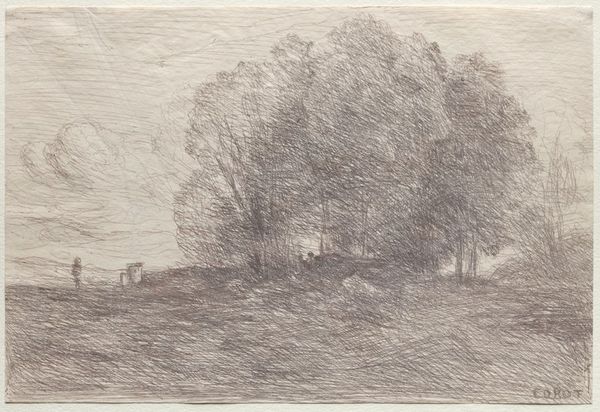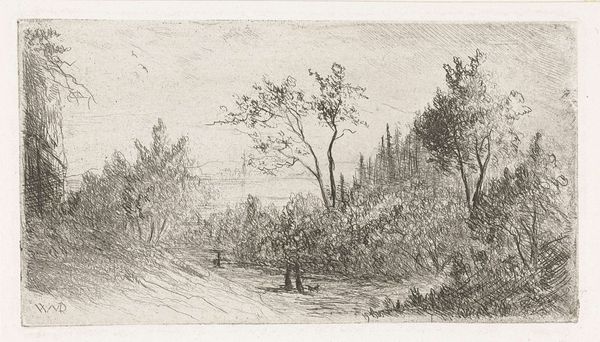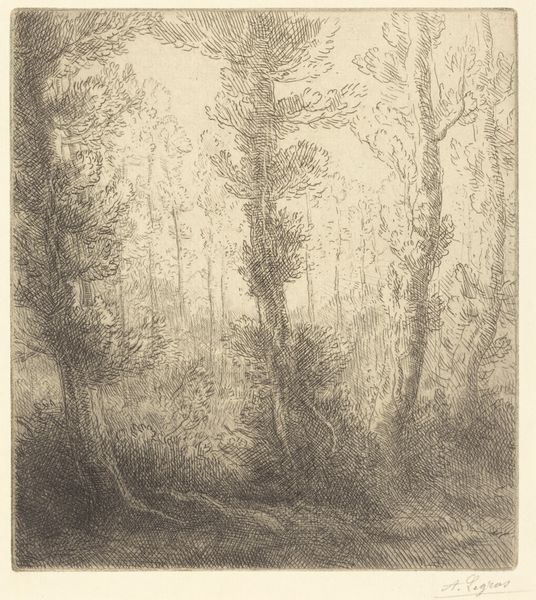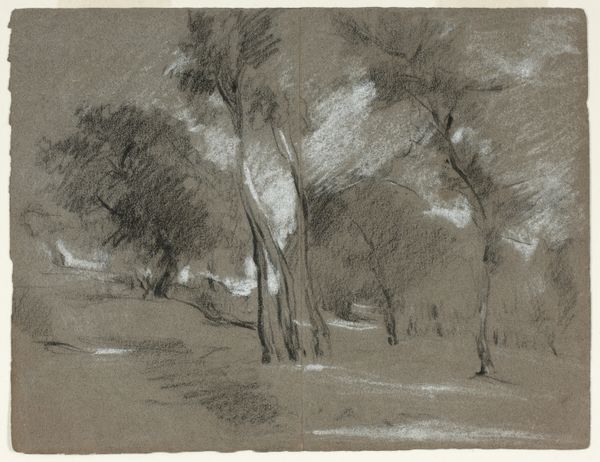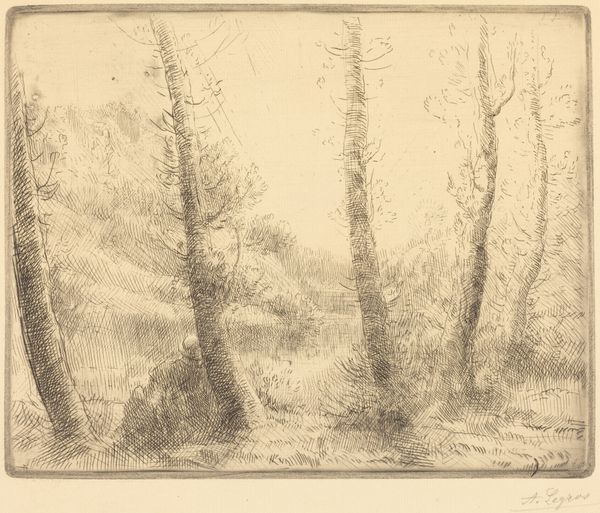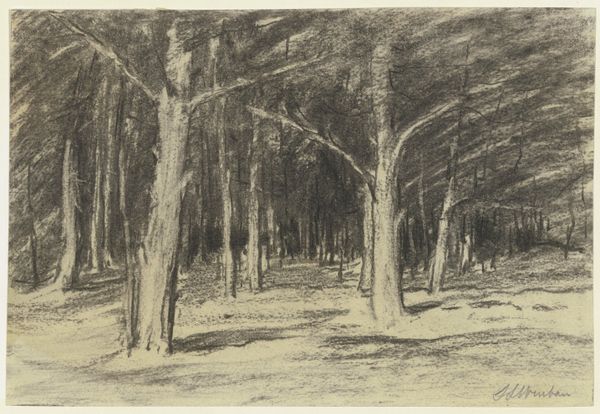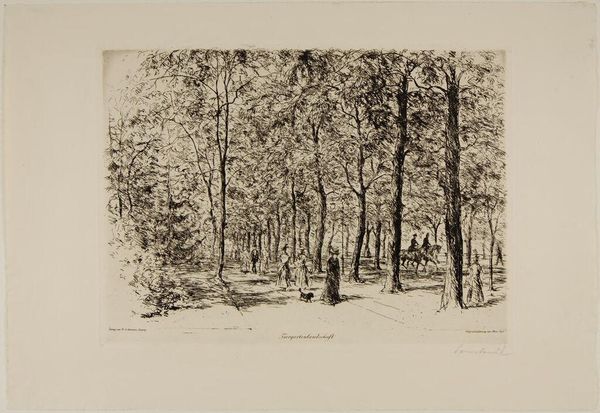
Dimensions: plate: 20.8 × 23.65 cm (8 3/16 × 9 5/16 in.) sheet: 30.48 × 43.97 cm (12 × 17 5/16 in.)
Copyright: National Gallery of Art: CC0 1.0
Curator: Jacques Beurdeley's "Lisière du bois", or "Edge of the Forest," an etching from 1910, presents us with a seemingly tranquil woodland scene. Editor: It strikes me as melancholic. The thin, almost skeletal trees against the pale sky. There's a starkness despite the scene’s natural subject. Curator: That starkness is partly the result of the etching technique itself. Notice the delicate lines and cross-hatching that define form. It emphasizes structure. It's not about heavy color, but line quality creating tone. Consider how this limited palette contributes to that initial melancholic response you identified. Editor: Precisely. The composition is equally key, isn't it? The placement of those sentinel-like trees—thin vertical forms rising from the thicker grasses. There's a tension there, between enclosure and openness. A liminal space if you will, where nature offers both shelter and exposes vulnerability. It hints at landscape in a way that mirrors the period's move toward modern anxieties and disconnects from the agrarian past. Curator: The art nouveau influence also speaks to the turn of the century. While this isn’t floral in the same obvious sense as many art nouveau pieces, the subtle stylized rendering, and the focus on linear grace is quite evident. The very arrangement suggests a desire for ornamentation within its landscape elements, almost weaving nature and decor. Editor: I find that intriguing, especially the relationship to art's role in that historical moment. Prints like this became increasingly available, creating the possibility of the consumption of idealized, perhaps romantic, scenes on an individual level, somewhat distanced from larger social shifts. Were they accessible art or vehicles to convey ideologies about our changing relationship to nature? Curator: Interesting thoughts. For me, I think this piece is less about ideology and more about visual structure and mood. It shows how a careful control of technique and form can result in a powerful atmospheric effect that transcends merely depicting a woodland edge. Editor: A persuasive synthesis. "Edge of the Forest" remains a suggestive landscape and powerful comment on its age. Thank you for illuminating the composition and historical background.
Comments
No comments
Be the first to comment and join the conversation on the ultimate creative platform.

